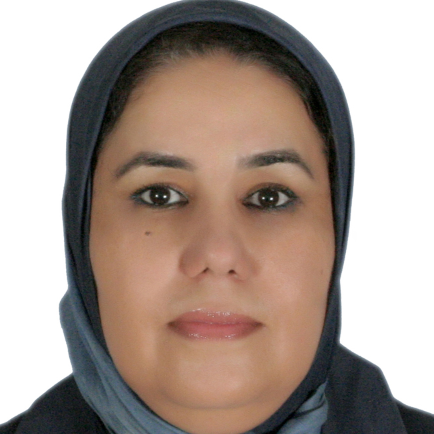
Noura Aknin
Work place: Information Technologies and Modeling Systems Research Unit, Abdelmalek Essaadi University, Faculty of sciences, Tetuan, Morocco
E-mail: aknin@ieee.org
Website:
Research Interests: Information Systems, Information Retrieval, Social Information Systems, World Wide Web, Information Theory
Biography
Noura AKNIN, received the PhD degree in Electrical Engineering, 1998 from Abdelmalek Essaadi University in Tetouan, Morocco. She is a Professor of Telecommunications and Computer Engineering in Abdelmalek Essaadi University since 2000. She is the Co-founder of the IEEE Morocco Section since November 2004. She has been a member of the Organizing and the Scientific Committees of several symposia and conferences dealing with RF, Mobile Networks, Social Web and information technologies. Prof Noura AKNIN is a member of IEEE Communications Society and Computer Society. Her research interests focus mainly on Wireless and mobile communication systems, radio network planning and optimization.
Author Articles
Capacity Enhancement by Using a Multi-User Detector on Uplink Synchronous Mode
By Fadoua Thami Alami Noura Aknin Najat Erradi Ahmed El Moussaoui
DOI: https://doi.org/10.5815/ijitcs.2016.06.03, Pub. Date: 8 Jun. 2016
The Uplink Synchronous Transmission Scheme [1], is a technique used by operators, that exploit the uplink orthogonality, to reduce multiple access interferences in uplink direction and consequently to increase uplink capacity. The USTS gives better performances when we have an ideal case presented by no channelization code restrictions per scrambling code. In reality, channelization codes are limited. To resolve this problem, several scrambling codes are used to admit more users in the cell. However, the use of different scrambling codes increases the multiple access interference and consequently decreases uplink capacity gain, since signals transmitted by users under different scrambling codes are non-orthogonal. To obtain more performances and therefore to increase the uplink capacity gain, we will study the introduction of a multi-user detector for interferences cancellation, in uplink synchronous mode. For that, two values of interference cancellation efficiency of the multi-user detector are considered. In this study, only the multiple access interference is reduced. To show the effect of other-cell interferences on uplink synchronous mode capacity, two scenarios are considered: an isolated cell and a multiple cell network.
[...] Read more.Uplink Capacity Estimation and Enhancement in WCDMA Network
By Fadoua Thami Alami Noura Aknin Ahmed El Moussaoui
DOI: https://doi.org/10.5815/ijitcs.2013.09.02, Pub. Date: 8 Aug. 2013
Uplink planification in a WCDMA network consists of estimating the maximum capacity that a cell can support, by using the quality of service equation designed by (E_b)/(N_0). We are interested in this work on two different scenarios: an isolated cell and multiple cells. This capacity is adversely affected by interferences due to own mobile stations and to others belonging to neighboring cells. In order to enhance capacity and minimize the blocking probability of new requests in the cell, we have proposed a Freeing Resources algorithm which consists of releasing some mobile stations in the handover area with the overloaded cell. This algorithm is based on freeing 1, 2 and 3 mobile stations of 12.2 kbps and 1 mobile station of 64 kbps.
[...] Read more.Other Articles
Subscribe to receive issue release notifications and newsletters from MECS Press journals